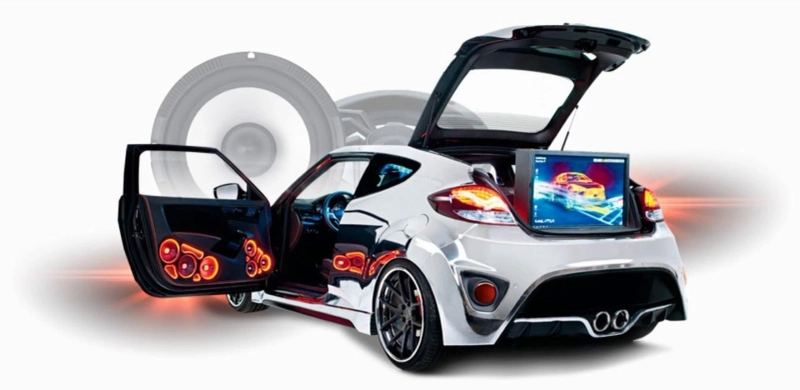For many people, listening to music while driving is an essential part of the driving experience. Over the years, car audio has evolved from simple AM radios to high-tech sound systems with advanced features. This article will explore the history of car audio, from its early beginnings to the latest developments in sound technology.
The Early Days of Car Audio
In the early days of car audio, radios were a luxury item that only the wealthy could afford. These radios were expensive and bulky, and required professional installation. However, as car ownership became more common, car manufacturers began to include radios as standard features in their vehicles. By the 1930s, car radios were becoming more compact and affordable, and were a popular option for many car buyers.
The Rise of Cassette Tapes and FM Radio
In the 1960s and 1970s, cassette tapes became the dominant format for car audio. Cassette tapes were more compact and durable than vinyl records, making them ideal for use in cars. In addition, FM radio became more popular, offering higher-quality sound than the older AM radios. Car manufacturers began to include cassette players and FM radios as standard features in their vehicles, and aftermarket car audio companies began to offer more advanced systems, including equalizers and amplifiers.
The Digital Revolution
In the 1980s and 1990s, digital technology began to revolutionize car audio. Compact discs (CDs) became the dominant format for music, offering higher-quality sound than cassette tapes. Car manufacturers began to include CD players as standard features in their vehicles, and aftermarket car audio companies began to offer more advanced systems, including CD changers and digital signal processors.
The Emergence of High-Tech Sound Systems
In the 2000s and 2010s, high-tech sound systems began to emerge, offering a range of advanced features. These systems included digital media receivers, which allowed users to connect their smartphones or other devices to their car audio systems wirelessly. In addition, some car audio systems included touchscreens, GPS navigation, and advanced equalization and sound processing features. These systems were often expensive, and were typically only available as options in high-end luxury cars.
Future Developments in Car Audio
As technology continues to evolve, the future of car audio looks bright. Some of the most exciting developments in car audio include the emergence of high-resolution audio formats, such as FLAC and DSD, which offer even higher-quality sound than CD-quality audio. In addition, some car manufacturers are experimenting with new sound system designs, including 3D audio systems that use speakers mounted in the ceiling of the car to create a more immersive listening experience. Finally, the emergence of electric and hybrid cars has opened up new possibilities for car audio, as these vehicles can offer more advanced sound systems without the need for a traditional combustion engine.
Conclusion
In conclusion, car audio has come a long way since its early days as a luxury item for the wealthy. Today, advanced sound systems are available in a wide range of vehicles, from affordable economy cars to high-end luxury models. As technology continues to evolve, the future of car audio looks bright, with exciting developments on the horizon that promise to deliver even higher-quality sound and more immersive listening experiences for drivers and passengers alike.



